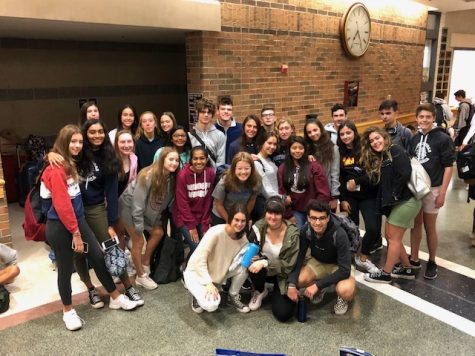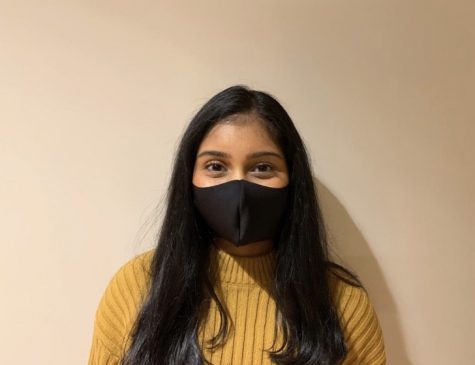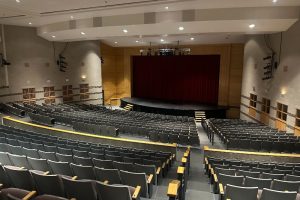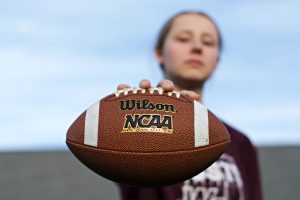Spanish exchange students visit Westford Academy
Spanish exchange students and their WA host partners pose for a picture during their field trip to Boston.
September 20, 2019
For the past two weeks, 15 Spanish exchange students from the Amor de Dios school in Salamanca, have learned about American culture and experienced what it is like to live in the United States. By stepping out of their comfort zone, these exchange students are getting the opportunity to meet new people and visit a country they have only, so far, learned about in their textbooks.
For the past ten years, the Spanish exchange program has successfully given many students the opportunity to learn more about a different culture by visiting the country. Andrea Pickersgill, a WA Spanish teacher who helped organize the program, mentioned that WA has partnered up with many schools in Spain in the past years.
“Mrs. Devlin has been running every Spanish exchange every two years for the past ten years and, in the past, Mrs. Devlin has organized this exchange with partner schools in Spain. Some of the schools have been inside Zaragoza and Madrid and more recently in Salamanca,” Pickersgill said.
The exchange students are partnered up with a WA host student who will be going to Spain next year. The host and the exchange students got each other’s contact information in May of 2019 which allowed getting to know each other a little bit before they actually met in September.

“We gave them their contact information for their partner in May. So since May, they’ve known their company and they’ve begun communication. I think that every day, they probably instantly sent Snapchats or [communicated] through Facebook or Instagram,” Devlin, also a Spanish teacher here at WA who has been organizing the program, said.
Exchange students shadow their partner around during the school days and experience the American school culture while being given an opportunity to practice their English. The students are oftentimes given a choice to choose what class to attend, especially when their partner is taking a test.
“So during the day, the idea is that they are shadowing their students […] If a host student is taking a test, we don’t really want [the exchange students] to be sitting there for 50 minutes. [Then], we arrange for them to go with someone else,” Devlin said.
Many Spanish teachers have requested the exchange students to visit their classes.
“This week some of the different Spanish teachers for different periods have said ‘can I have a group of Spaniards come and talk to my students.’ So, the main idea is to shadow the person who’s hosting you but if you need an alternative situation then find someone from within the group or a friend,” Devlin said.
After school, the students go on many field trips, both big and small. For example, they went to Newport, toured Boston, and visited many museums.
If there is no field trip planned for the day, the student goes to their host’s activities, if possible. If not, then they go to a different host’s activities. Devlin stressed the idea that the program is a group effort where all WA students work together to give the exchange students a great experience.
“It has to be a group effort because it’s not just supposed to be one-on-one. It’s supposed to be everybody getting to know all the other members as well,” Devlin said.
The application process for the exchange begins a year before the program actually starts, so everything can run smoothly. The process usually begins with advertising the program and then asking students who are interested to apply with just general information about themselves.
WA students are required to answer a few questions in Spanish on the their application.
“The process is, we advertise and we ask students who are interested to apply. They fill out the application which is just general information, and then there are questions in Spanish,” Pickersgill said.
After the application, students are called in for an interview that has a mix of English and Spanish questions.
Students who are chosen are required to demonstrate their ability to communicate as well as their motivation and respectfulness. A student’s prior commitments may influence a committee’s decision. If the student has multiple activities, they may be rejected.
“Primarily, they are selected based on their communication, but also, do they seem really motivated, do they have the ability to be very involved; is the student responsible, respectful, polite, and culturally sensitive?” Devlin said.
Devlin, after interacting with many exchange students over the years, finds it interesting to see the difference in perspective between teenagers from different parts of the world. It helps her compare the cultures by understanding similarities and differences between the two. She enjoys seeing the exchange students being excited about trying new things, giving her a chance to see things differently.
“I would say is it allows you to see similarities between two very different cultures, but also to see perspectives,” Devlin said.
Medina, the teacher from Spain, also agreed that the students have a lot in common. She believes the Spaniards have learned the importance of language and have the opportunity to learn about a country that they have only so far been lectured about.
“I think our students have realized the importance of learning a language. When you’re in class it seems like we don’t know a different world and when you come here, they are aware of the importance of talking,” Medina said.
Medina wants her students to acknowledge and value the amazing opportunity they have gotten to experience this program.
“I want my students to value and to appreciate how lucky they are to be here […] I am sure they are going to be more independent and confident through this program,” Medina said.








